Special Report
States and Territories Where Women Won the Right to Vote Before the 19th Amendment
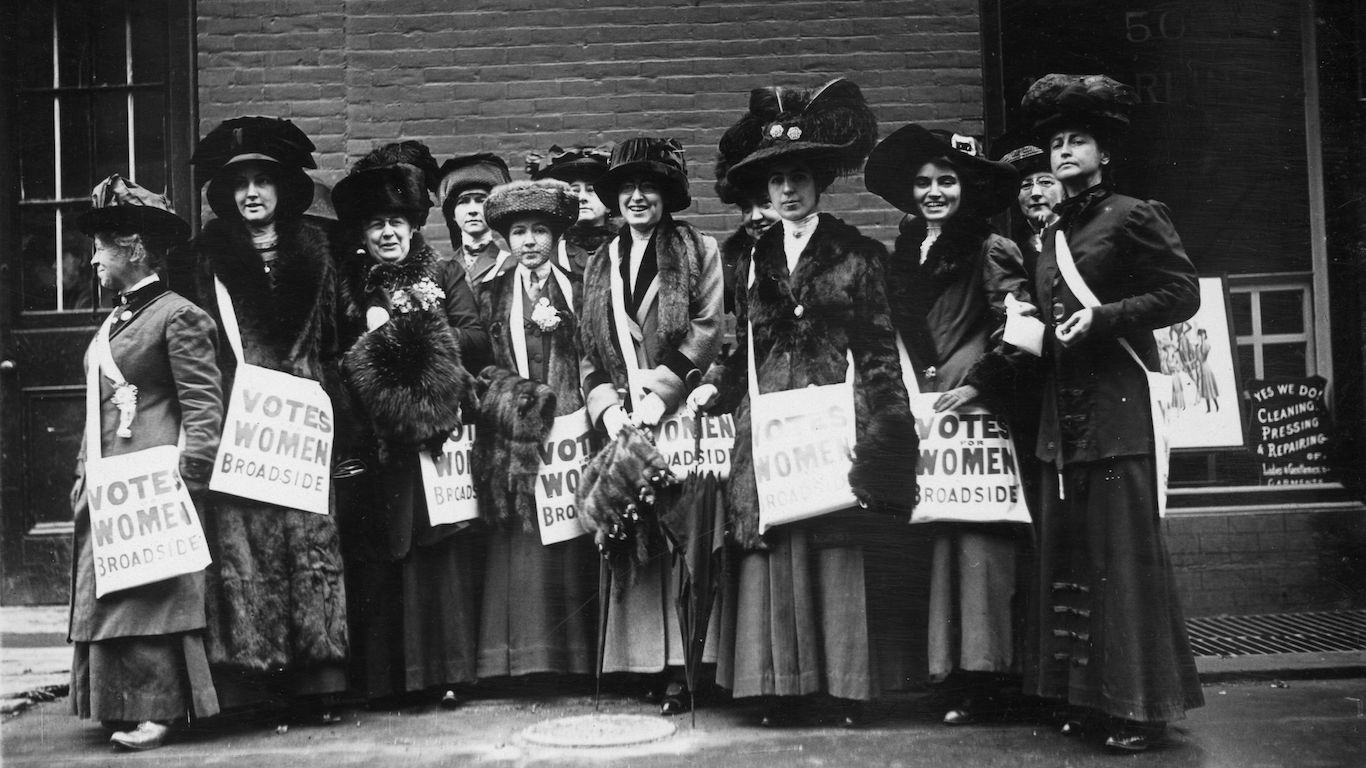
Published:
Last Updated:

Women won the right to vote in a number of countries before they won it in the U.S. New Zealand was the first, back in 1893, to pass women’s suffrage. Australia followed in 1902. Then came Finland, Norway, Denmark, Canada, Austria, Germany, Poland, Russia, the Netherlands, and finally, on Aug. 26, 1920, with the passage of the 19th Amendment to the Constitution, the United States.
It may have taken the country that long to come around, but a number of pre-statehood territories and early states were trailblazers in the fight for women’s suffrage.
Click here to see the 19 places where women could vote before the 19th Amendment
One of the earliest examples was New Jersey, which granted to single women owning property “worth fifty pounds” the right to vote between the Declaration of Independence in 1776 and 1807 — when the privilege was rescinded due to political manoeuvrings. In 1838, widows with school-age children could vote in Kentucky school elections; in Kansas, a similar limited rights measure pass in 1861.
The American West has always had an independent streak, though, and the Territory of Wyoming became the first place in America to pass universal women’s suffrage in 1869. When it was admitted to the Union, Wyoming also became the first state to let women vote.
While participation in the democratic process is a fundamental right and responsibility of American citizens age 18 and older, not everybody takes advantage of it — these are the states with the highest voter turnout today.
The first seven states to enfranchise women were all in the West. Here’s the whole list of the 19 American territories and states that passed women’s suffrage before the passage of the 19th Amendment.

1. Territory of Wyoming
> Year of women’s suffrage: 1869
Wyoming’s legislature voted to grant all female residents of the territory 21 years and older the right to vote in 1869. The bill was proposed by saloonkeeper William Bright, who was also president of the legislature’s upper house.
[in-text-ad]
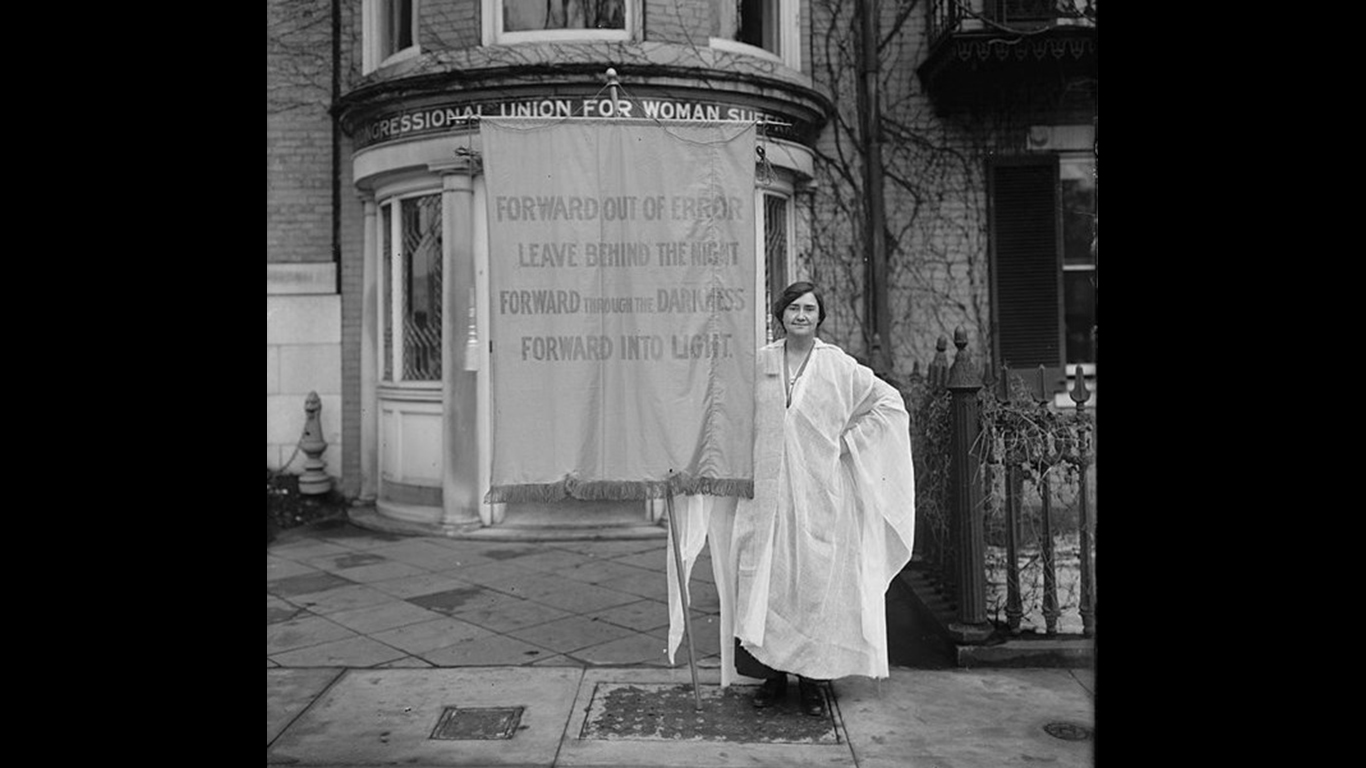
2. Territory of Utah
> Year of women’s suffrage: 1870
After Utah became the second territory to grant suffrage, Congress disenfranchised its women in 1887 — an act designed to weaken Mormon political power and punish their practice of polygamy. In 1895, after the church had ended its acceptance of polygamy, Utah became a state, and suffrage was restored through the state constitution in 1896.
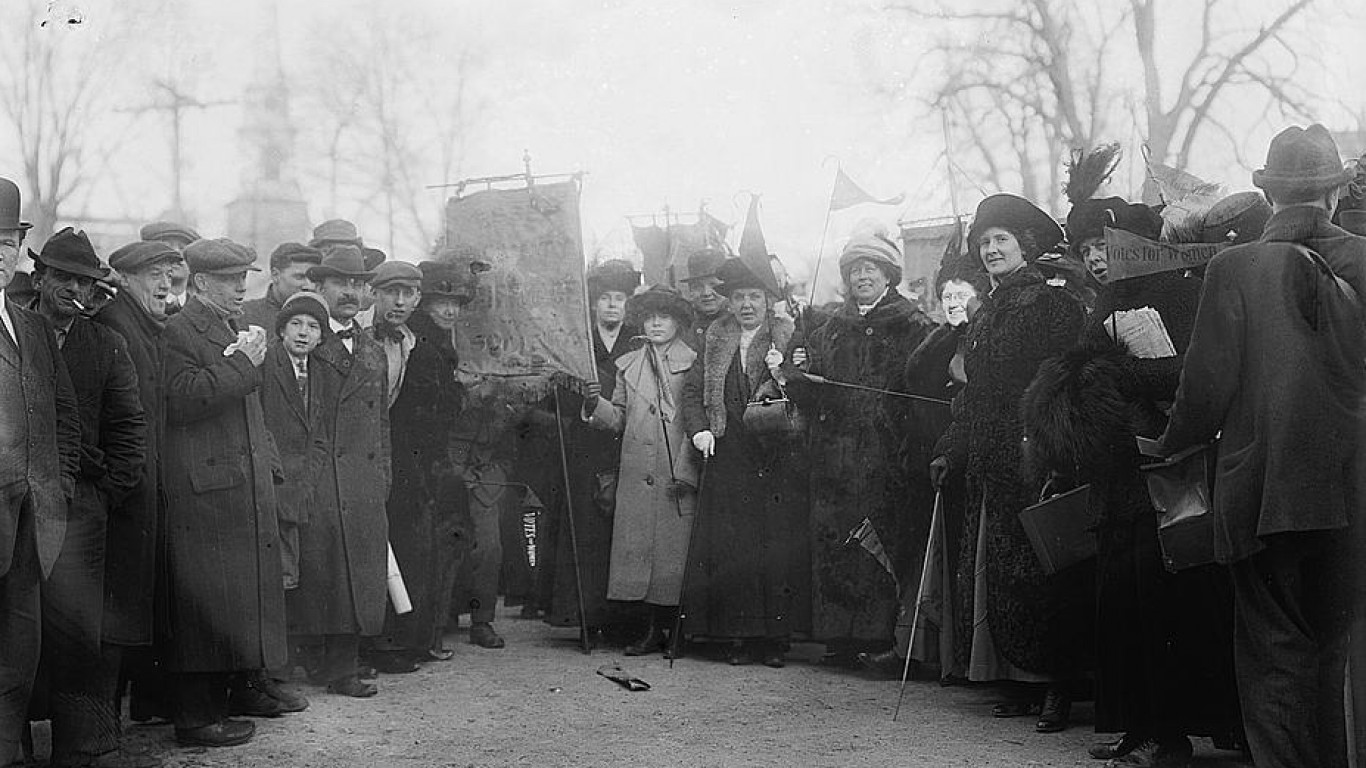
3. Territory of Washington
> Year of women’s suffrage: 1883
Four years after the Territory of Washington passed women’s suffrage in 1883, the bill was overturned. A similar measure was passed in 1888, but it was revoked the same year. Further bids in 1889 and 1898 failed, but a state constitutional amendment passed in 1910 finally cemented the right.
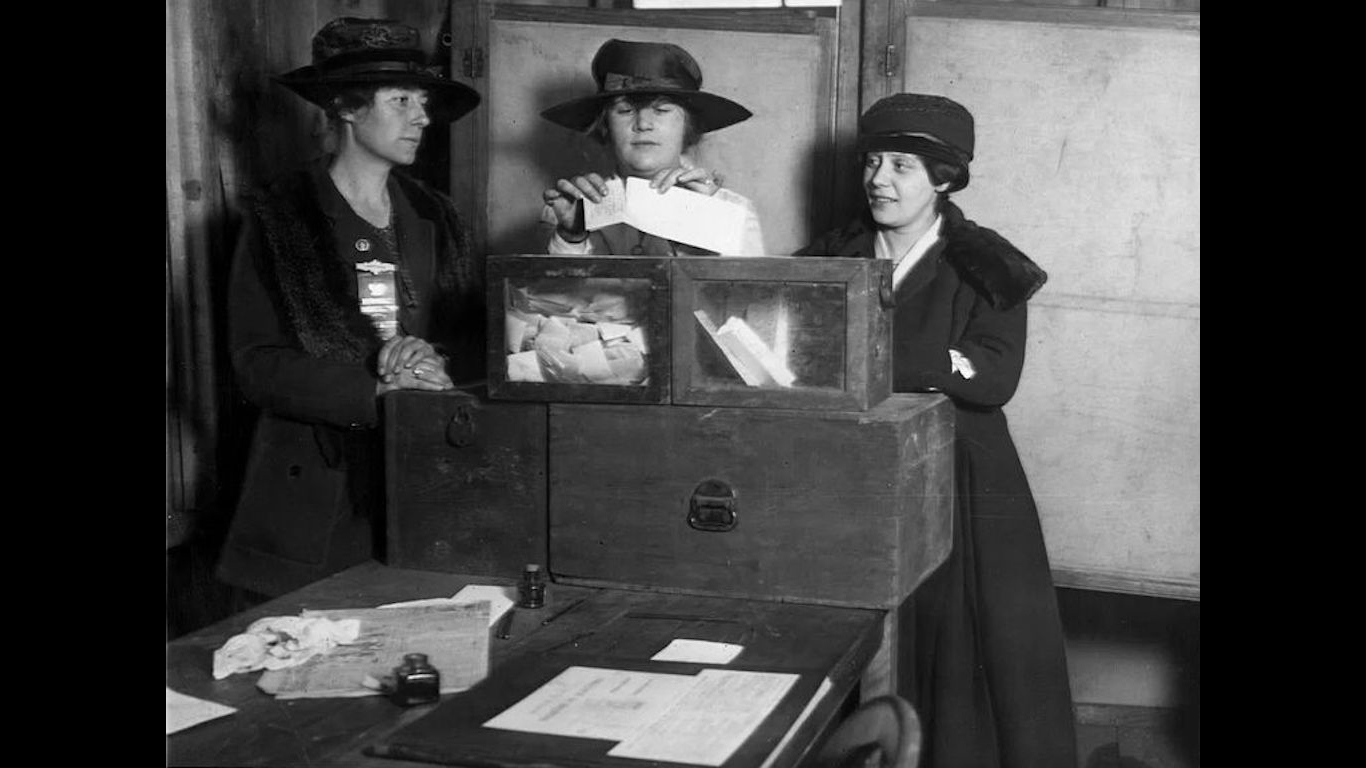
4. Wyoming
> Year of women’s suffrage: 1890
Twenty years after the territory passed a women’s suffrage measure, when Wyoming sought statehood, Congress refused to consider the territory’s bid unless it rescinded suffrage. The legislature replied by telegram: “We will remain out of the Union one hundred years rather than come in without the women.” Congress relented, and Wyoming became the first state where women could vote.
[in-text-ad-2]

5. Colorado
> Year of women’s suffrage: 1893
While Wyoming became the first state to pass women’s suffrage legislation, refusing to rescind the provision it had passed as a territory, Colorado was the second state to enfranchise women, extending voting rights through a state referendum to “women of lawful age, and otherwise qualified.”
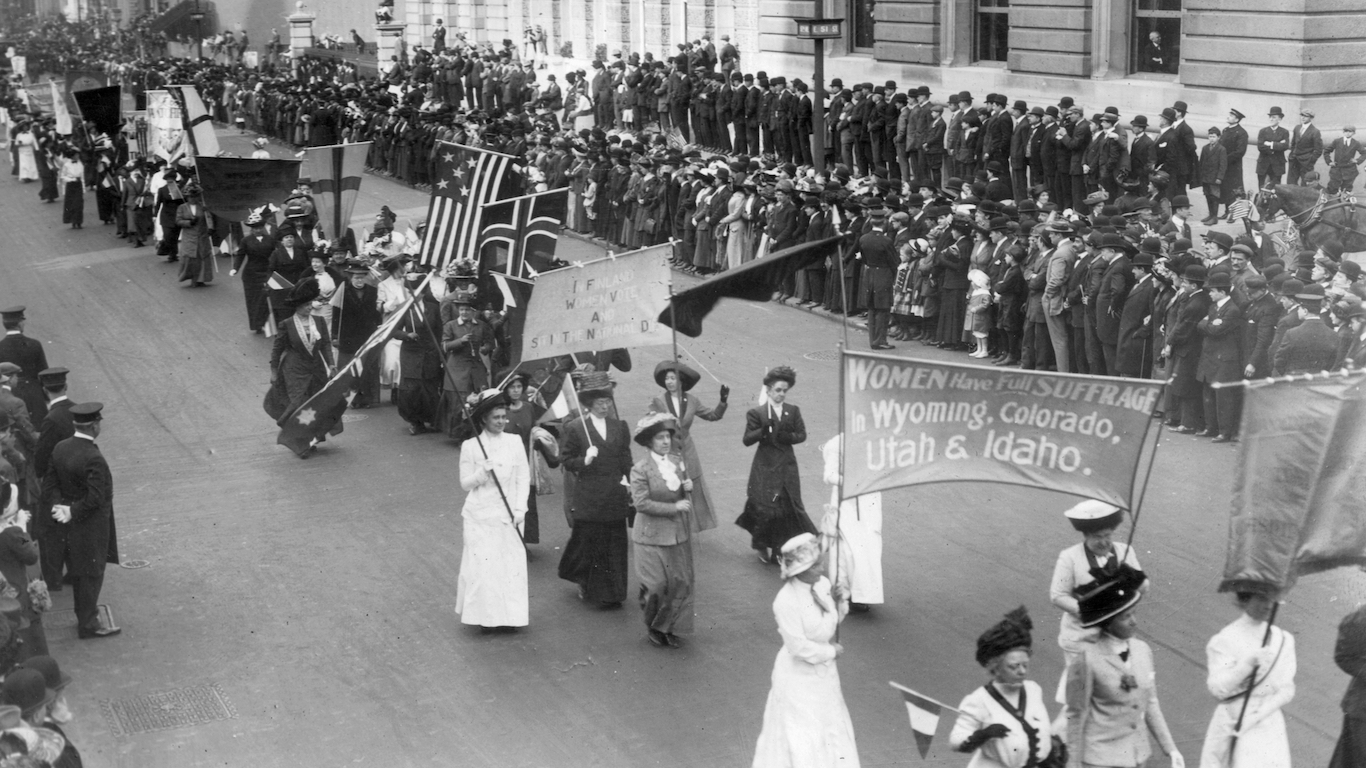
6. Utah
> Year of women’s suffrage: 1896
When Congress admitted Utah as a state in 1896, it accepted the state constitution which had — after a false start — passed a women’s suffrage measure the previous year.
[in-text-ad]

7. Idaho
> Year of women’s suffrage: 1896
Idaho became the fourth state to pass a law enfranchising women to vote, largely as a result of a coalition between suffragettes and the temperance movement, which believed women would be likely to vote for the prohibition of alcohol. Indeed, thanks to the women’s vote, Idaho became a dry state in 1916, four years before the whole country went dry.
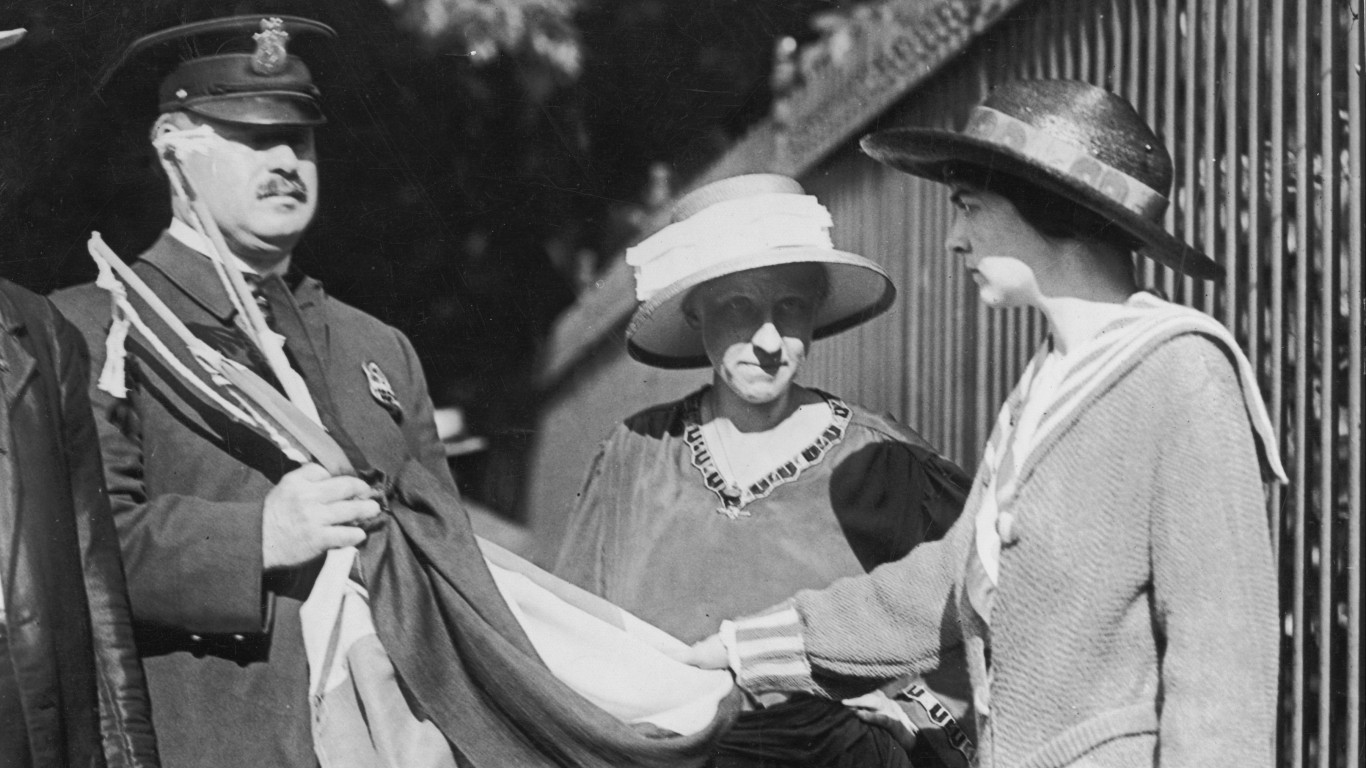
8. Washington
> Year of women’s suffrage: 1910
Washington became the first state to adopt suffrage in the 20th century. Washington suffragettes were later instrumental in promoting voting rights nationwide, and they are credited with helping pass the 19th Amendment.
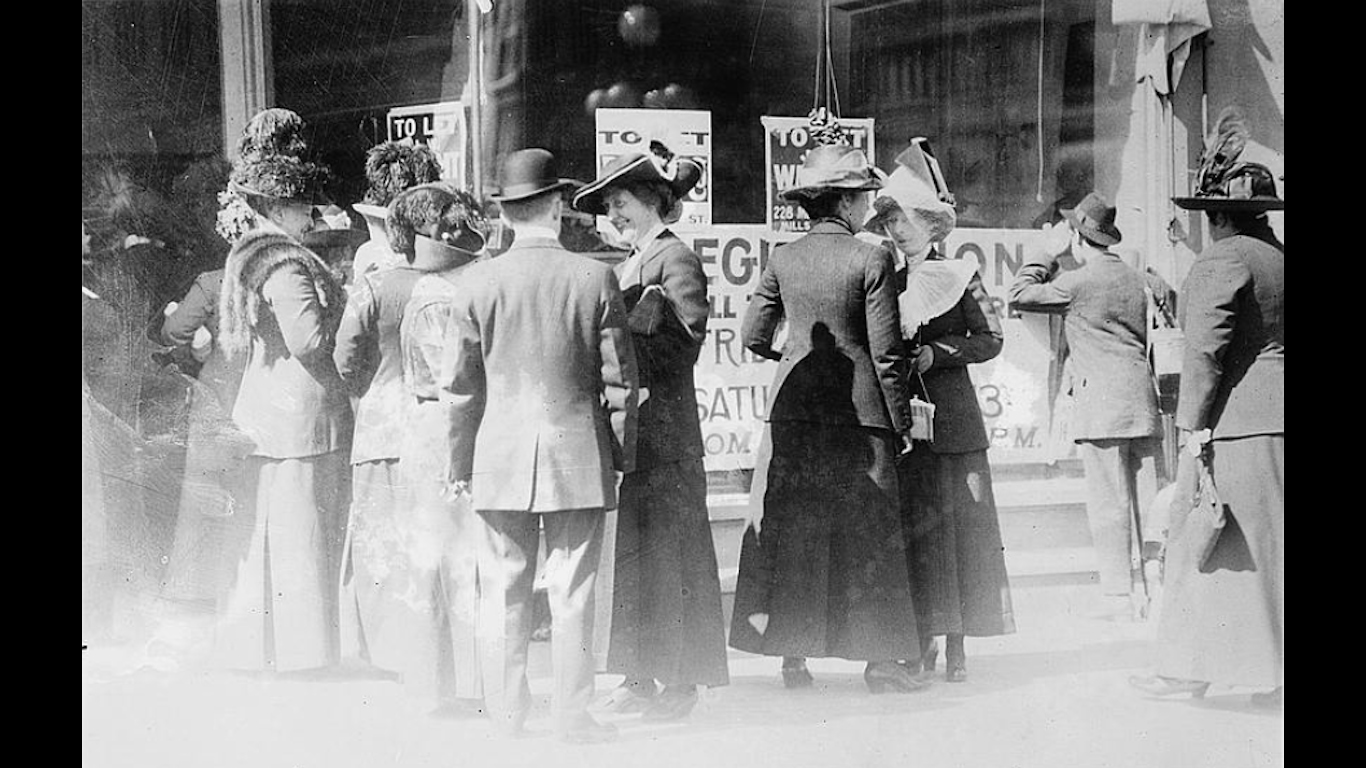
9. California
> Year of women’s suffrage: 1911
The Golden State’s Proposition 4, adopted by the state legislature and approved by voters in a referendum held as part of a special election, granted women the right to vote. An earlier attempt to pass a similar motion, in 1896, had been rejected by voters.
[in-text-ad-2]
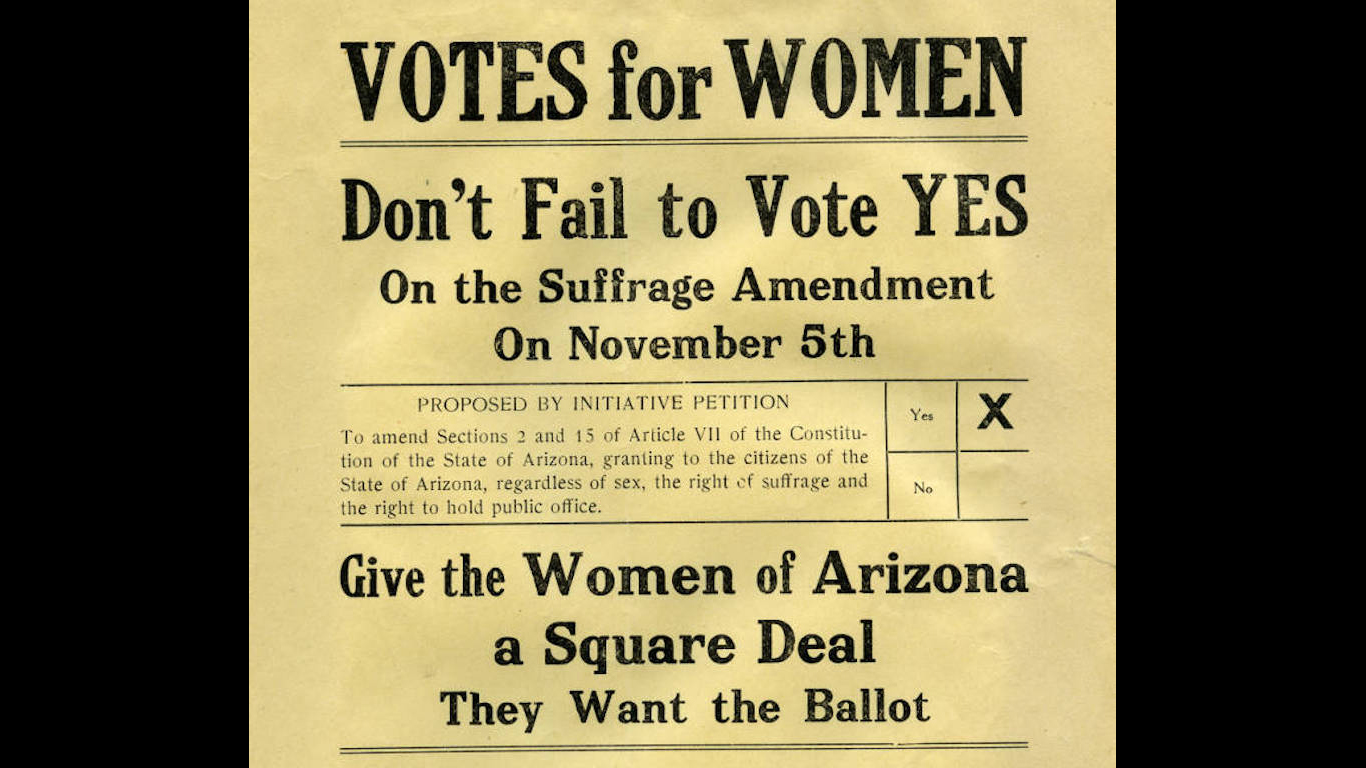
10. Arizona
> Year of women’s suffrage: 1912
When Arizona became a state in 1912, its constitution did not include women’s voting rights. Suffragettes and their supporters, with help from the Nation American Woman Suffrage Association (NAWSA), agitated for equality and won their case in an election late the same year.

11. Kansas
> Year of women’s suffrage: 1912
In 1867, the Kansas legislature proposed measures granting voting rights to women and African Americans in the November elections. Both measures were defeated — women’s suffrage by a considerably larger margin. The state recognized the right of women to vote in local elections in 1887, but another referendum on full women’s suffrage was shot down in 1894. Finally, but a third one, in 1911-1912, won enough support to finally pass.
[in-text-ad]
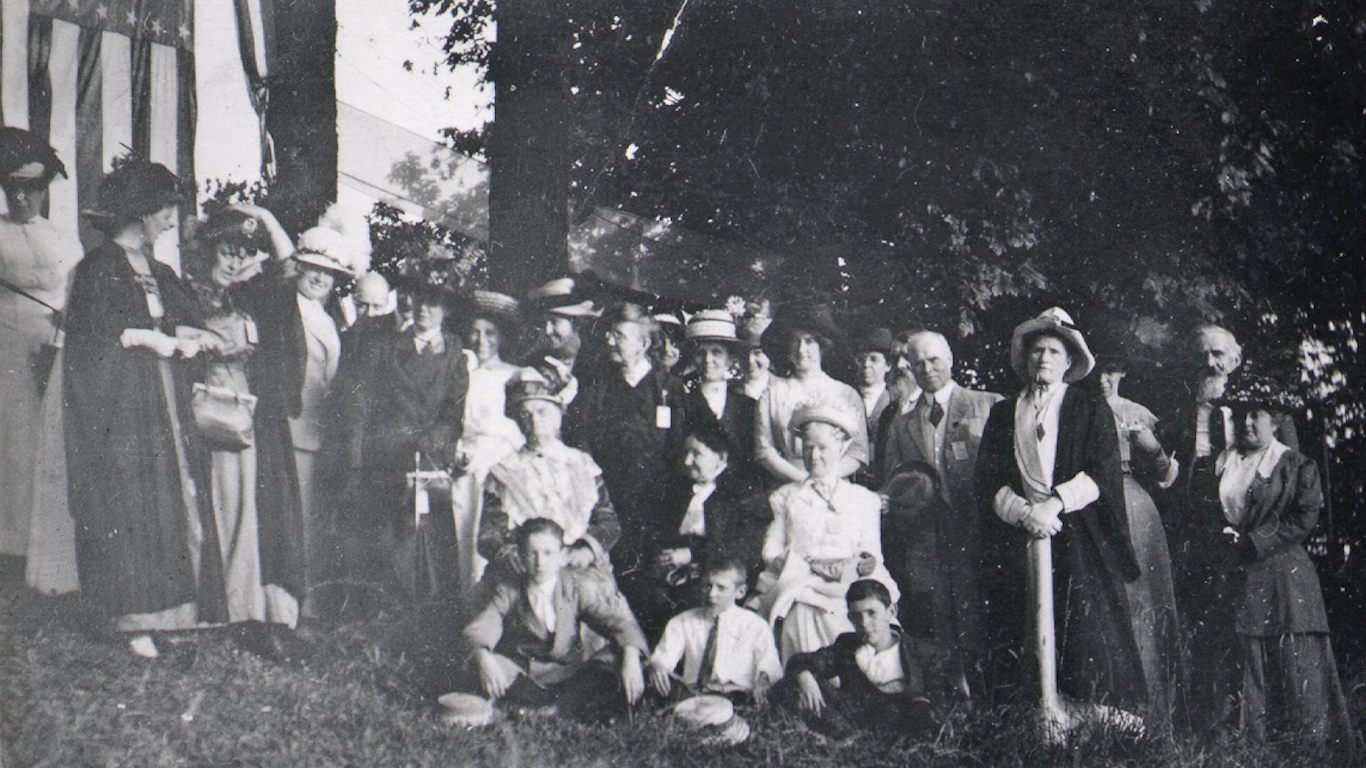
12. Oregon
> Year of women’s suffrage: 1912
The issue of suffrage was raised six times between 1884 and 1912 in Oregon — more than in any other state. The leader of Oregon’s suffrage movement was newspaper publisher Abigail Scott Duniway. After 52% of the state’s men voted in favor of the women’s suffrage measure, Duniway wrote Oregon’s Equal Suffrage Proclamation.
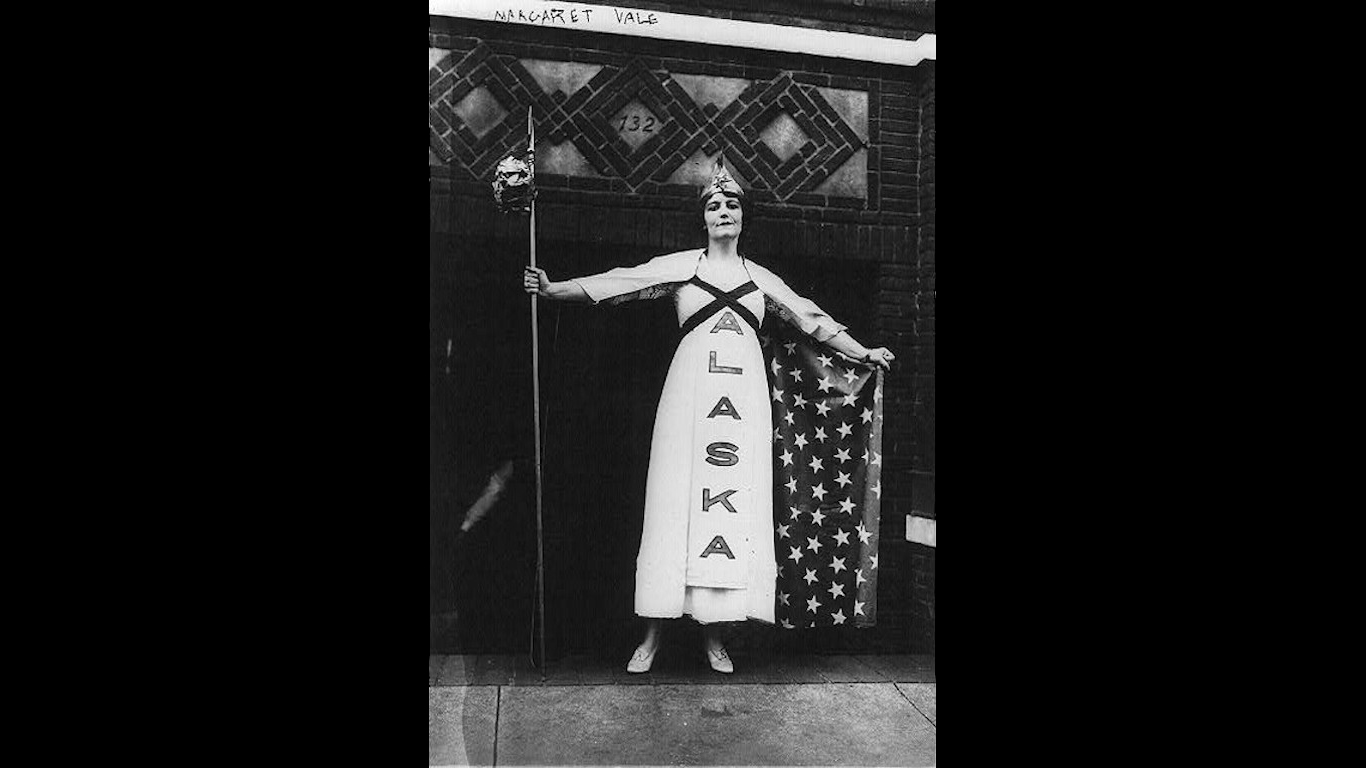
13. Territory of Alaska
> Year of women’s suffrage: 1913
Since Alaska became a state only in 1959, it didn’t vote one way or the other for ratification of the 19th Amendment, but the Alaska Territory passed women’s suffrage seven years before that amendment became law. The provision applied only to white women, however, and not to the indigenous population, who were granted the right to vote in 1915 only if they gave up their tribal customs and traditions.
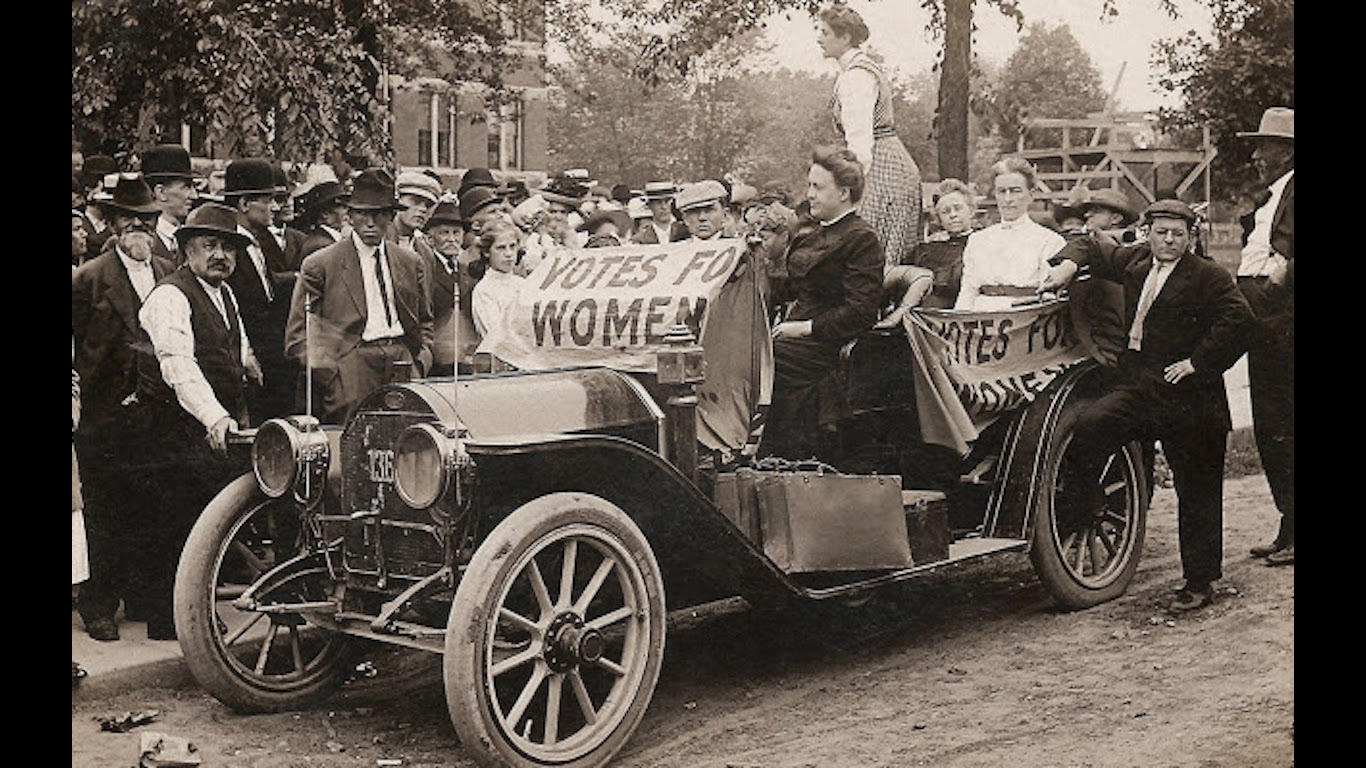
14. Montana
> Year of women’s suffrage: 1914
The voters of Montana approved women’s suffrage by a 53% to 47% margin — but only for non-Indian women (who would have to wait 10 years until passage of the Indian Citizenship Act). The state’s women wasted no time putting their new rights to use: Montana elected the first woman to ever hold federal office in the United States, Jeannette Pickering Rankin, elected to the House of Representatives in 1916.
[in-text-ad-2]

15. Nevada
> Year of women’s suffrage: 1914
Nevada’s state constitution, adopted in 1864, gave the vote only to white men (African Americans won the right upon passage of the 15th Amendment in 1870). Pro-female votes from rural areas of the state are credited with finally passing women’s suffrage.
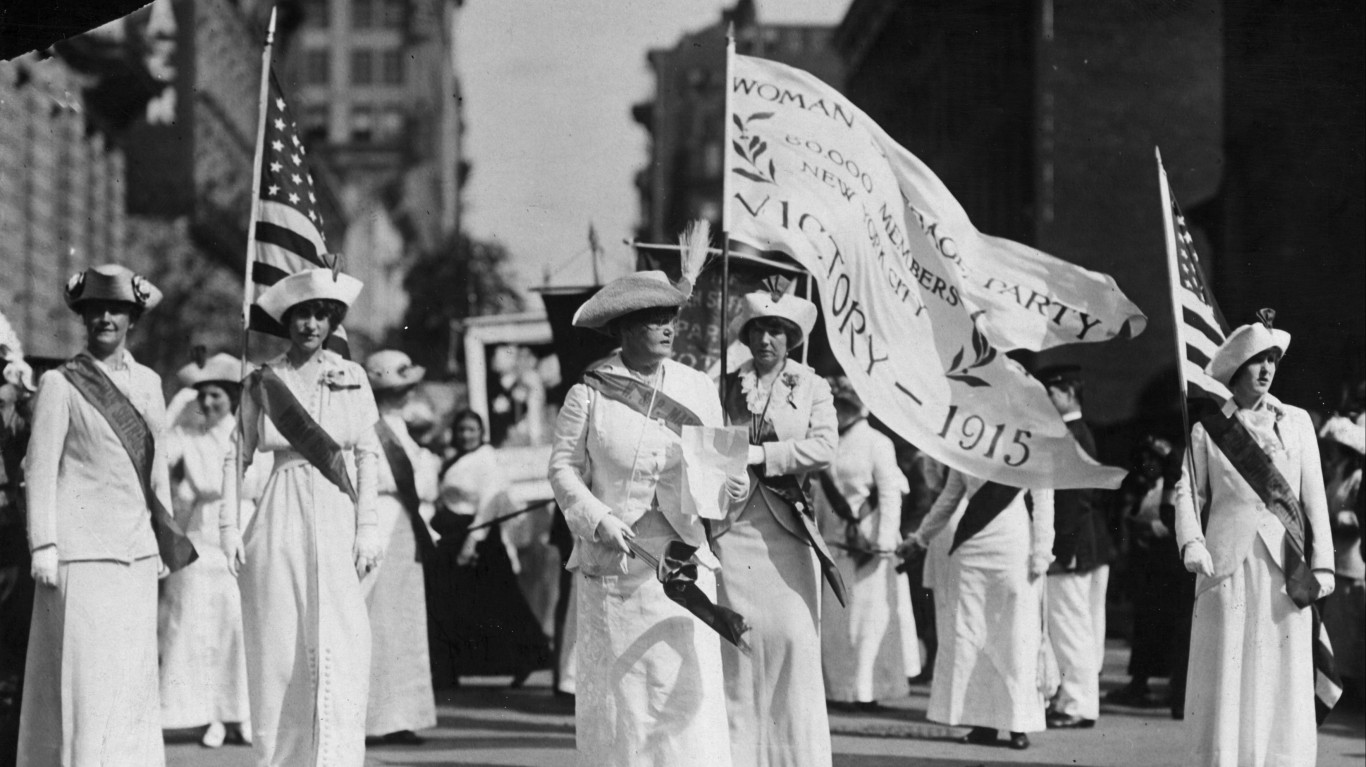
16. New York
> Year of women’s suffrage: 1917
In 1867, though they were active in many states, famed suffrage leaders Susan B. Anthony and Elizabeth Cady Stanton concentrated their efforts in New York. At the state’s constitutional convention that year, newspaperman and politician Horace Greeley, chairman of the suffrage committee and previously a strong supporter of women’s rights, unexpectedly came out against the women’s vote, and the legislature supported him. Some 50 years later, under pressure from Stanton’s daughter, Harriot Stanton Blatch, among others, suffrage finally passed.
[in-text-ad]
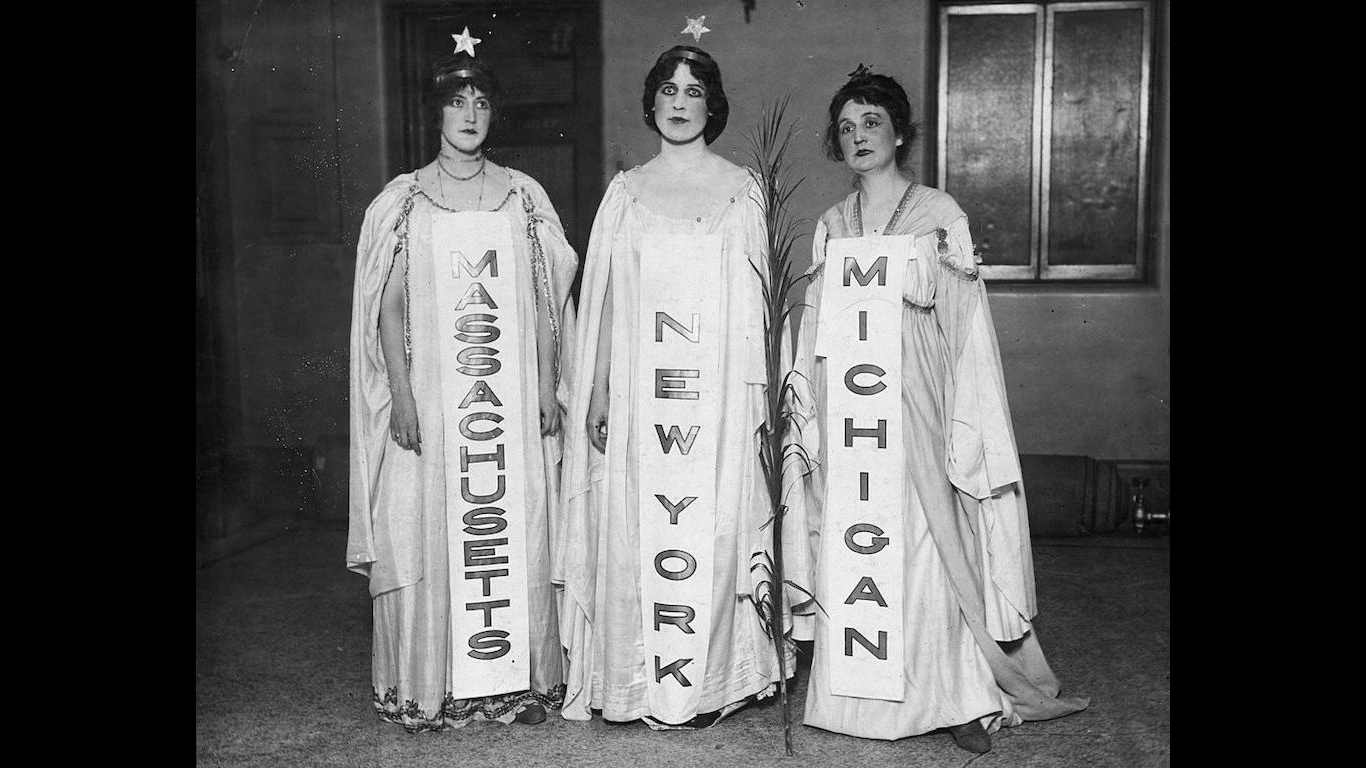
17. Michigan
> Year of women’s suffrage: 1918
The women of Michigan fought for suffrage for decades before they finally won it through a state constitutional amendment. When the U.S. Congress passed the 19th Amendment the following year, Michigan was one of the first states to ratify it, approving the measure unanimously.
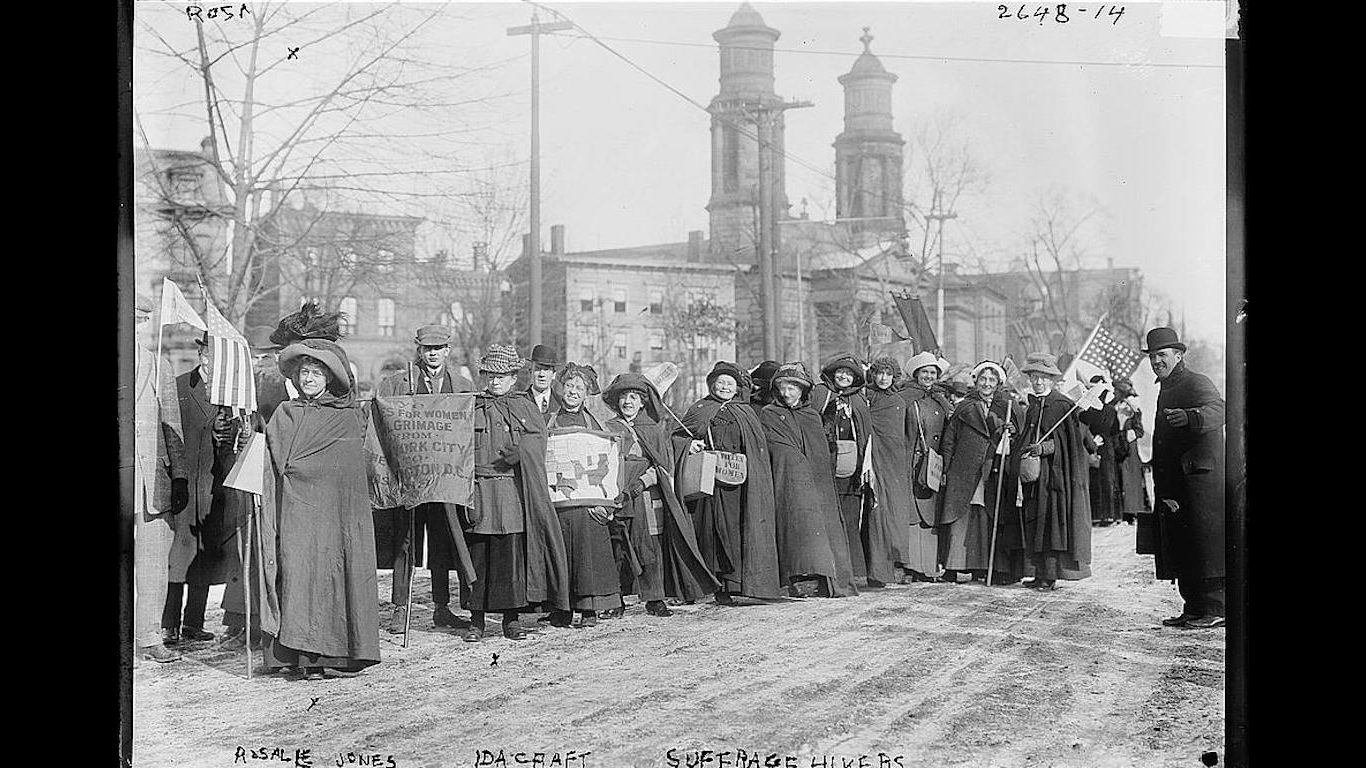
18. Oklahoma
> Year of women’s suffrage: 1918
The suffrage movement had its beginnings in Oklahoma in 1890, when the Woman’s Christian Temperance Union lobbied with the territorial legislature for the right to vote in school elections. They were denied, and several subsequent attempts to win similar measures were also defeated. When a universal suffrage amendment was finally added to the state constitution in 1918, it was despite the efforts of the women-run Oklahoma Anti-Suffrage Association.

19. South Dakota
> Year of women’s suffrage: 1918
Women could vote in school elections in the Dakota Territory as early as 1883. A bill granting full suffrage lost by one vote in 1875, and another that passed in 1885 was vetoed by the territorial governor. The South Dakota state constitution mentioned only the word “male” in the section on voting rights when it became a state in 1889, and suffrage measures were defeated a number of times before one measure finally passed in 1918.
If you’re one of the over 4 Million Americans set to retire this year, you may want to pay attention. Many people have worked their whole lives preparing to retire without ever knowing the answer to the most important question: am I ahead, or behind on my goals?
Don’t make the same mistake. It’s an easy question to answer. A quick conversation with a financial advisor can help you unpack your savings, spending, and goals for your money. With Zoe Financial’s free matching tool, you can connect with trusted financial advisors in minutes.
Why wait? Click here to get started today!
Thank you for reading! Have some feedback for us?
Contact the 24/7 Wall St. editorial team.